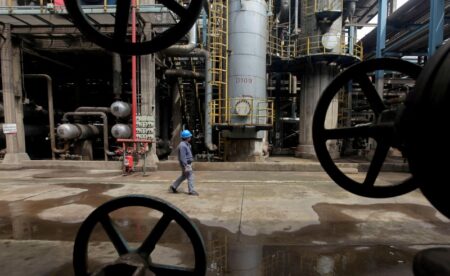By Harshit Verma
(Reuters) – There is a 65% chance of the La Nina weather pattern, characterized by cold temperatures in the Pacific Ocean, developing during July-September, a U.S. government forecaster said on Thursday.
This shift from the current neutral phase between La Nina and El Nina weather patterns is expected to persist into the northern hemisphere winter of 2024-25, with an 85% chance during November-January, the National Weather Service’s Climate Prediction Center (CPC) said in its monthly forecast.
The cycle between El Nino, La Nina, and a neutral phase typically lasts two to seven years and can spawn wildfires, tropical cyclones, floods, and prolonged droughts, impacting farmers worldwide.
Geographically concentrated crops are more susceptible to price hikes during poor weather conditions. This makes global wheat and corn prices less likely to be affected by La Nina or El Nino, said Bill Weatherburn, senior climate and commodities economist at Capital Economics.
El Nino is a natural warming of eastern and central Pacific Ocean surface temperatures, while La Nina is characterized by colder temperatures in the equatorial Pacific region.
“La Nina correlates with warm and dry weather across N. America (Midwest U.S.), East Asia (China) and parts of South America (Argentina and parts of Brazil) during the growing season,” Maxar meteorologist Chris Hyde said.
However, for crops spanning South Africa (maize), South and Southeast Asia (India’s sugarcane and wheat), and Australia, La Nina is supportive due to high rainfall and can contribute to crops performing well as a result, aside from flooding risks, Isaac Hankes, senior weather analyst at London Stock Exchange Group (LON:), said.
Weather experts note that these correlations are influenced by the timing and intensity of La Nina.
Other agencies, such as the World Meteorological Organization (WMO), and Japan’s weather bureau also noted an end to the El Nino phenomenon and forecast La Nina to form this year.
For India, the shift from El Nino to La Nina likely brings a wetter monsoon, but another phenomenon called the IOD (Indian Oscillation Dipole) can influence rainfall intensity, AccuWeather’s lead international forecaster Jason Nicholls said.
An IOD-positive event leads to a wetter summer monsoon, while a negative IOD event leads to less moisture and drier conditions, Nicholls added.
Read the full article here
















